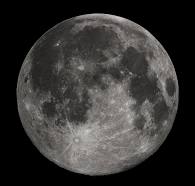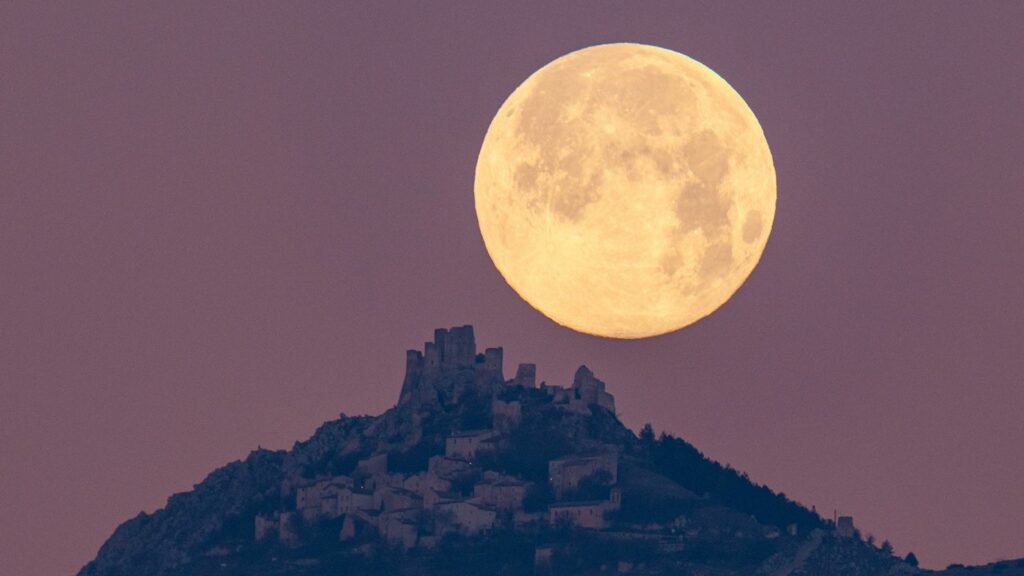The Moon, Earth’s sole natural satellite, maintains an orbit at an average distance of 384,400 km, approximately 30 times the diameter of Earth. Due to the influence of Earth’s gravitational pull over time, tidal locking has occurred, resulting in the Moon consistently presenting the same face to Earth.

Orbital period: 27 days
Radius: 1,737.4 km
Gravity: 1.62 m/s²
Distance to Earth: 384,400 km
Age: 4.53 billion years
Satellite of: Earth
Surface area: 3.793×107 km2; (0.074 of Earth’s)
Potential for Life
Despite numerous missions exploring the Moon, no evidence has been found to indicate the presence of living organisms. Nonetheless, there is growing interest in the possibility of future human colonization of the Moon. The discovery of water ice, particularly in the darkened craters at the poles where concentrations are highest, suggests that the Moon may offer some degree of hospitality for potential human settlers in the future.
Orbit and Rotation
The Moon undergoes synchronous rotation, meaning it rotates at the same rate that it revolves around the Earth, resulting in the same hemisphere facing Earth consistently. Although the far side of the Moon, which we never see from Earth, is often referred to as the “dark side,” this is a misnomer. As the Moon orbits Earth, different parts experience sunlight or darkness at varying times, leading to changing illumination and the appearance of lunar phases from our perspective. For instance, during a “full moon,” the hemisphere visible from Earth is fully illuminated by the Sun, whereas a “new moon” occurs when the far side of the Moon receives full sunlight while the near side experiences nighttime. The Moon completes an orbit around Earth in 27 Earth days, rotating at the same rate, resulting in an apparent lunar orbit of approximately 29 days from our vantage point, considering Earth’s own rotation and orbit around the Sun.
Structure
The Moon, Earth’s natural satellite, is composed of distinct layers, including a core, mantle, and crust. Its core, although proportionally smaller compared to other terrestrial bodies, consists of a solid, iron-rich inner core with a radius of approximately 149 miles (240 kilometers), enveloped by a liquid iron shell approximately 56 miles (90 kilometers) thick. Surrounding the iron core is a partially molten layer measuring about 93 miles (150 kilometers) in thickness. The mantle extends from the top of this partially molten layer to the bottom of the Moon’s crust and is likely composed of minerals such as olivine and pyroxene, containing elements like magnesium, iron, silicon, and oxygen. The Moon’s crust varies in thickness, with approximately 43 miles (70 kilometers) on the near side and 93 miles (150 kilometers) on the far side. Comprising oxygen, silicon, magnesium, iron, calcium, and aluminum, the crust also contains trace amounts of titanium, uranium, thorium, potassium, and hydrogen. While the Moon once harbored active volcanoes, they have long been dormant, remaining inactive for millions of years.
Water on the Moon

The bright regions on the Moon’s surface are referred to as the highlands, while the darker patches are known as maria, derived from the Latin word for seas. These maria are impact basins that were inundated with lava between 4.2 and 1.2 billion years ago. The contrast between these light and dark areas signifies rocks of varying compositions and ages, offering insight into the formation of the early lunar crust from a magma ocean. The presence of preserved craters, enduring for billions of years, serves as a record of the Moon’s impact history as well as that of other celestial bodies within the inner solar system.